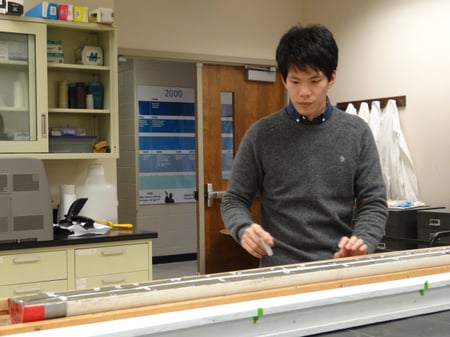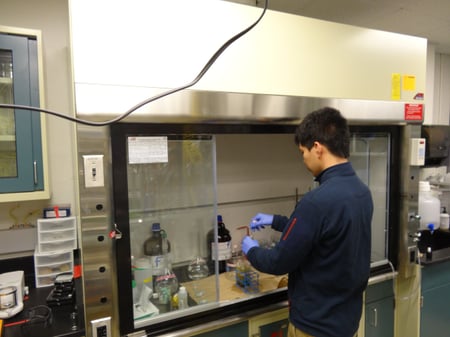I conducted a research on paleoceanography of the Arctic Ocean at Bird Polar and Climate Research Institute, Ohio State University in the United States for 9 months from September 1, 2016 to May 31, 2017 with financial assistance from the program for overseas visits by young researchers, which is a part of ArCS project. The sediment cores retrieved from the Arctic Ocean are stored at Bird Polar and Climate Research Institute, and it offers an ideal environment to study paleoceanography of the Arctic Ocean.
During my stay, I analyzed ice rafted debris transported by sea ice and iceberg, planktonic foraminifera contained in it and its mineral composition among others, using sediment cores retrieved from western Arctic Ocean. I also examined the relationship between the restoration of the collapse events in the western Arctic Ocean side of the Laurentide ice sheet and the abrupt global climate change during the last glacial period. The collapses in the Hudson Bay side of Laurentide ice sheet, known as the Heinrich events, are well studied, but the timing of these collapses in the western Arctic Ocean side and its impact on global climate have not been investigated yet. One of the reasons for this, is that sediments may not contain sufficient amounts of microfossils for radiocarbon dating. The number of the layers in which microfossils observed were extremely limited among the sediment cores of the western Arctic Ocean which I have analyzed so far, and the amount was very small as well. Therefore, I stayed at the University of South Florida for three weeks in February 2017, to learn the method in which we can separate young autochthonous organic carbon for radiocarbon dating through stepwise heating of the organic carbon in sedimentary cores. We applied the technique to sediment cores from the Arctic Ocean for the first time. We will be able to expect further developments in paleoceanography of the Arctic Ocean, if this method proves successful in dating the layers of the Arctic Ocean sediments, which are even devoid of microfossils.
During my stay, through the participation in AGU, the International Arctic Workshop and other smaller seminars, I have had a lot of opportunities to get opinions from and have discussions with Arctic Ocean paleoceanographers from different countries, which will be specially beneficial for my future research. Finally, I would like to express my sincere appreciation to all those who supported my research at Ohio State University.
Kenta Suzuki (Hokkaido University)

Samples were taken from the sediment core retrieved from the western Arctic Ocean.





